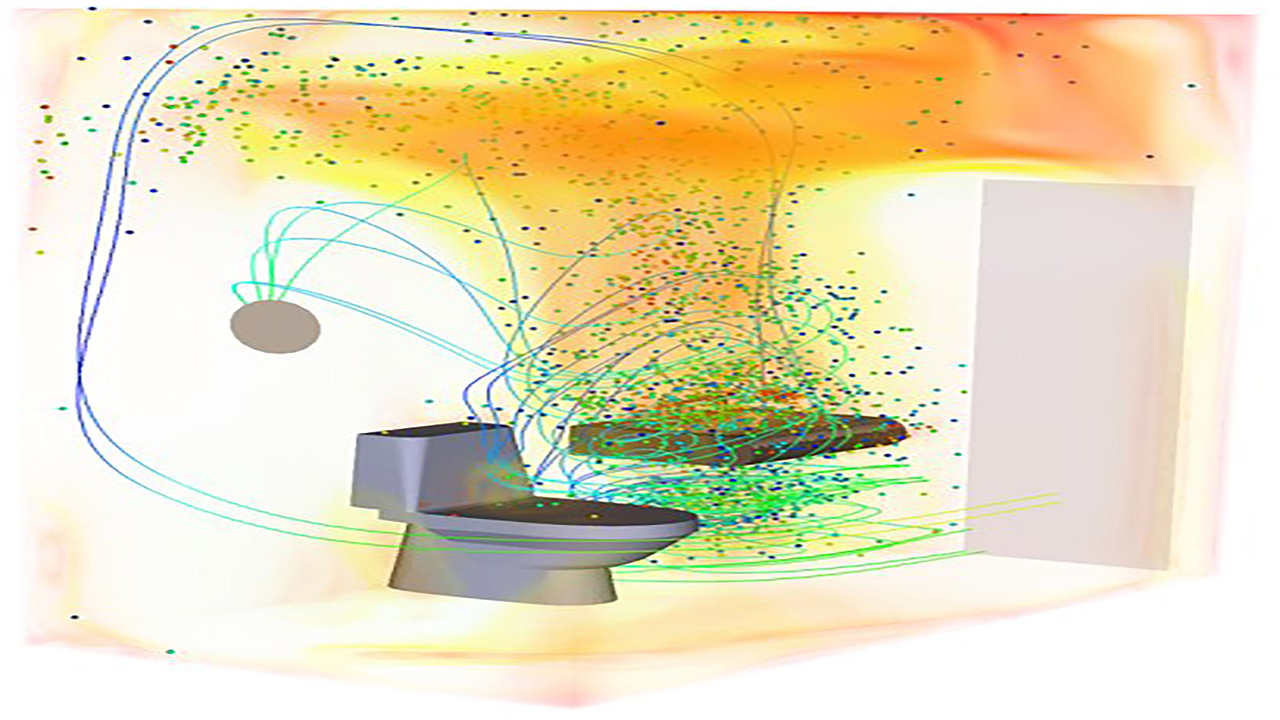Engineering Airflow To Prevent the Spread of COVID-19
0 View
Share this Video
- Publish Date:
- 5 November, 2021
- Category:
- Covid
- Video License
- Standard License
- Imported From:
- Youtube
Tags

Recirculation flow in a dead zone above the sink can retain infectious particles for a long time. Credit: Vivek Kumar, Ansys Inc.
Ventilation systems designed to prevent the spread of COVID-19 must be based on the air circulation in a room.
As we approach two full years of the COVID-19 pandemic, we now know that it is spreading primarily through the air. The virus floats in tiny microscopic droplets or aerosols that come out of our mouths when we speak, yell, sing, cough or sneeze. It then floats in the air, where it can be inhaled and transferred.
This inspired researchers in India to explore how we can better understand and develop airflow to reduce the transmission of COVID-19. To do this, they used their knowledge of the airflow around aircraft and engines to tailor the airflow in interior spaces.
In Physics of Fluids, from AIP Publishing, they report computer simulations of the airflow in a public washroom, showing that infectious aerosols in dead zones can linger up to 10 times longer than the rest of the room. These dead zones of trapped air are often found in corners of a room or around furniture.
Toilets generate aerosols and are present in offices, restaurants, schools, airplanes, trains and other public spaces. They have been identified as a potential source of infection transmission in highly populated areas of India.
“We explored a small one-person facility used by many, one after the other,” said Krishnendu Sinha, a professor of aerospace engineering at the Indian Institute of Technology Bombay. “I have a similar laundry room in my house, which made studying it easier. Mobility was limited and labs were closed, but this allowed us to continue our studies during the lockdown.”
The researchers found that the chance of infection is significantly higher in a dead zone.
“Surprisingly, they can be near a door or window, or right next to where an air conditioner is blowing air,” he said. “You would expect these to be safe zones, but they are not.”
Computer simulations show “airflows in circuitous routes, like a vortex,” said Vivek Kumar, a co-author. “Ideally, air should be continuously removed from every part of the room and replaced with fresh air. That is not easy when the air is recirculating in a dead zone.”
The biggest questions about airflow revolve around ventilating indoor spaces to minimize the spread of infection. Where should fans and ventilation ducts be placed? How many of them? How much air must flow through it?
“Currently, ventilation design is often based on air changes per hour (ACH),” Sinha said. “These design calculations assume that fresh air reaches all corners of the room evenly. We know from computer simulations and experiments within a real laundry room that this does not happen.
“ACH can be 10 times lower for dead zones. To design ventilation systems that are more effective against the virus, we need to place ducts and fans based on the air circulation in the room. Blindly increasing the air volume through existing ducts does not solve the problem.”
Reference: “Effect of Recirculation Zones on the Ventilation of a Public Washroom” by Krishnendu Sinha, Mani Shankar Yadav, Utkarsh Verma, Janani Srree Murallidharan, and Vivek Kumar, Nov. 2, 2021, Physics of Fluids.
DOI: 10.1063/5.0064337










